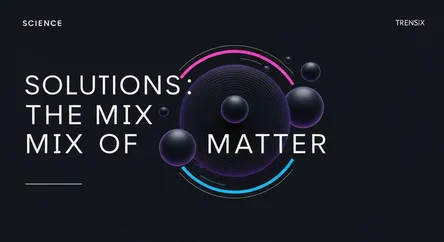Science
Solutions: The Mix of Matter
What is it?
In chemistry, a solution is a homogeneous mixture composed of two or more substances. The substance that is dissolved is called the solute, and the substance in which it dissolves is the solvent. While the most common example is a solid dissolving in a liquid (like sugar in water), solutions can exist in any state of matter. For example, the air we breathe is a gaseous solution, and metal alloys like steel are solid solutions. The defining feature is that the solute particles are evenly distributed at a molecular or ionic level and will not separate or settle out over time.
Why is it trending?
The study of solutions is always relevant as a fundamental scientific concept, but it trends due to its application in modern technology and sustainability. Current research is heavily focused on developing "green solvents" to replace toxic ones in industrial processes, reducing environmental impact. In material science, creating novel solutions like advanced metal alloys is crucial for aerospace and electronics industries. Furthermore, understanding how substances dissolve is vital for environmental science, particularly in addressing water pollution by measuring and removing dissolved contaminants.
How does it affect people?
Solutions are fundamental to our existence and technology. Biological processes rely on aqueous solutions; blood plasma, for instance, is a solution that transports nutrients and waste throughout the body. Many everyday products are solutions, including beverages, cleaning supplies, and liquid medicines. Understanding concentration is critical for safety and effectiveness, from the dosage of a medication to the level of chlorine in a swimming pool. The principles of solutions are essential in countless fields like pharmacology, manufacturing, and food science, making them a cornerstone of modern life.
